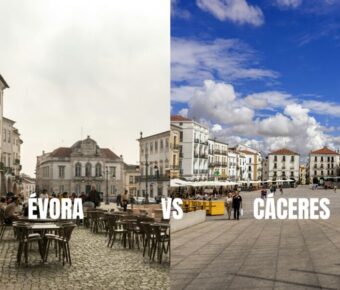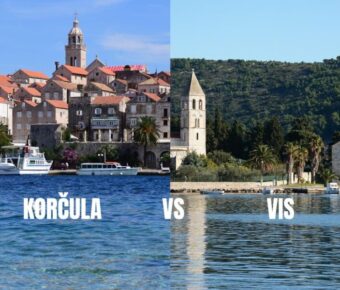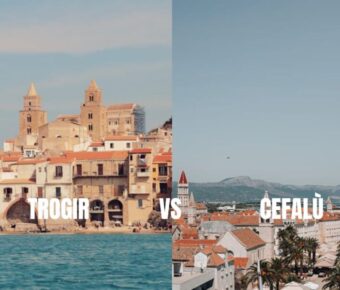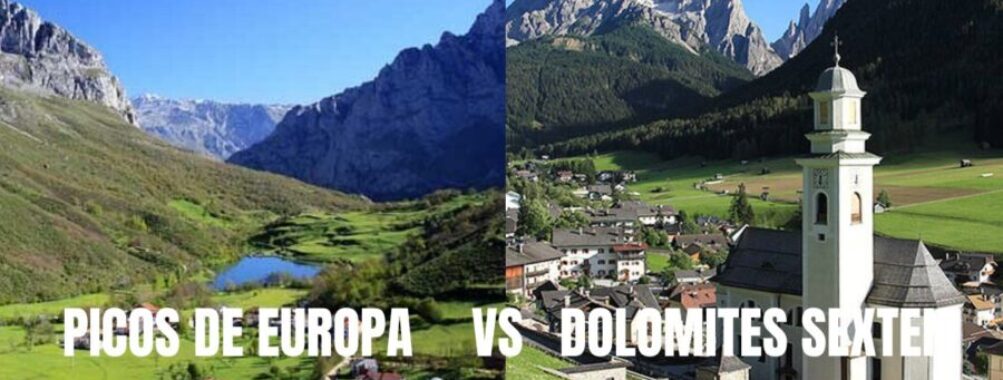
Picos de Europa vs Dolomites Sexten: 7 Key Differences for Adventurers
Trying to pick between Spain’s Picos de Europa and Italy’s Sexten Dolomites? Honestly, it’s tough. It all boils down to what kind of mountain vibe you’re after. If you’re chasing rugged, less-touristed wilderness with deep gorges and wild limestone peaks, the Picos de Europa are your place. If you want iconic alpine scenery, polished trails, and those legendary via ferrata routes, then the Sexten Dolomites come out on top.
I’ve wandered both, and the contrast jumps out at you. In the Picos, you feel like you’ve slipped into a raw, remote world where goats far outnumber people. Sexten, meanwhile, hands you those classic Tre Cime views and super clear routes that make multi-day trekking a breeze.
Both regions have their own magic, but your pick depends on whether you’re craving rustic seclusion or a polished alpine experience.
Table of Contents
- Key Takeaways
- Picos de Europa vs Dolomites Sexten: Location and Overview
- Geographic Setting
- National Park Status
- Regional Access Points
- Landscape and Scenery
- Iconic Peaks and Formations
- Valleys and Villages
- Unique Geological Features
- Adventure Activities: Climbing, Trekking, and Via Ferrata
- Climbing Opportunities
- Trekking Trails
- Via Ferrata Routes
- Gateway Towns and Local Culture
- Potes: The Heart of Picos de Europa
- Bilbao: Urban Gateway to Adventure
- Sexten Villages: Alpine Charm
- Best Times to Visit and Weather Considerations
- Seasonal Highlights
- Weather Patterns
- Crowd Levels and Accessibility
- Travel Tips and Essential Information
- Getting There and Around
- Accommodation Options
- Safety and Regulations
- Frequently Asked Questions
- What are the best seasons to visit the Picos de Europa and the Dolomites Sexten for hiking?
- Can you recommend some must-see sights in both the Picos de Europa and the Dolomites Sexten?
- What are the differences in the difficulty levels of trails between the Picos de Europa and the Dolomites Sexten?
- Are there guided tours available in both Picos de Europa and the Dolomites Sexten, and how do they compare?
- What unique flora and fauna might one encounter while trekking in the Picos de Europa compared to the Dolomites Sexten?
- Could you provide insight into the cultural experiences available to visitors of the Picos de Europa and the Dolomites Sexten?
- Book Your Dream Experience
- More Travel Guides
Key Takeaways
- Each spot brings a totally different mountain atmosphere.
- Your decision’s going to hinge on whether you want wild solitude or those iconic, well-marked alpine trails.
- Planning around seasons, access, and culture can really shape your adventure.
Picos de Europa vs Dolomites Sexten: Location and Overview
Both the Picos de Europa in northern Spain and the Dolomites Sexten in northeastern Italy belong to larger mountain systems. Still, they couldn’t feel more different once you’re actually out there. Geography, national park status, and how you get there all play into the experience.
Geographic Setting
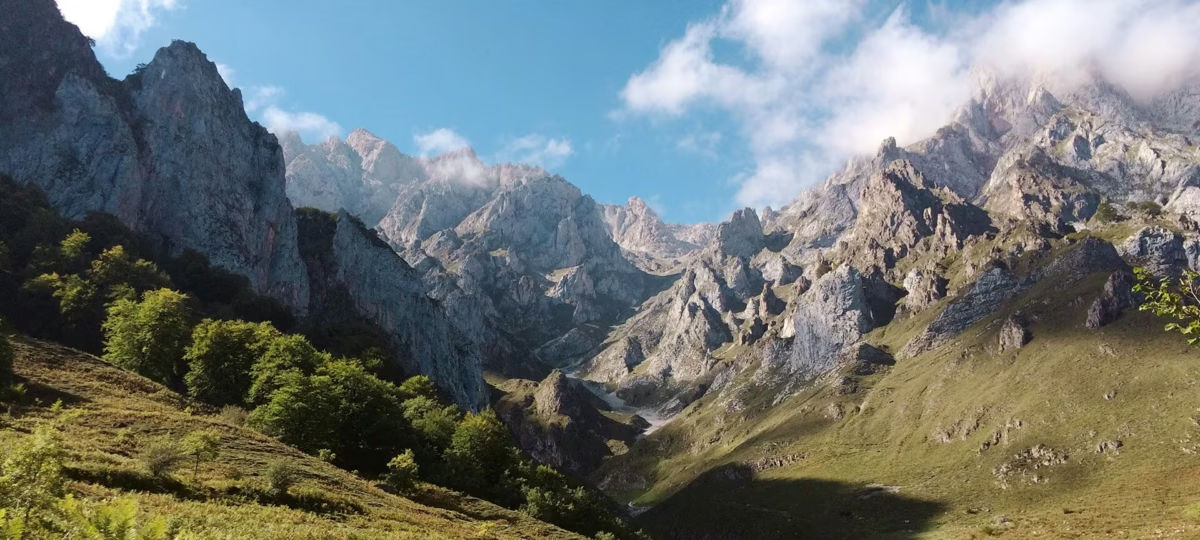
The Picos de Europa are tucked into the Cantabrian Mountains up north in Spain. They sprawl across Asturias, Cantabria, and Castile and León, with limestone peaks like Torre de Cerredo hitting 2,650 meters. What really gets me is how compact it all is—you can drive from lush valleys to sheer cliffs in less than an hour.
Over in Italy, the Dolomites Sexten sit in South Tyrol, right near the Austrian border. These peaks belong to the Dolomites, known for their jagged, pale rock that glows pink when the sun goes down. The Sexten Dolomites feel more spread out, with wide valleys breaking up the rocky spires.
If you’ve ever wandered around Potes, the main gateway to the Picos, you know how daily life and the mountains are basically neighbors. Sexten’s villages, though, feel more alpine—wide meadows, wooden chalets, and a postcard-perfect look. Both are jaw-dropping, but they give off totally different vibes.
National Park Status
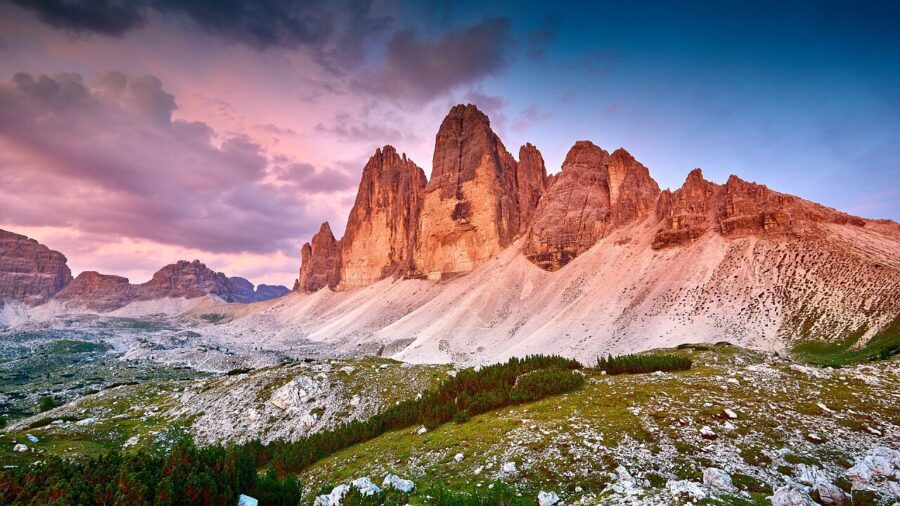
The Picos de Europa National Park is one of Spain’s oldest protected areas, dating back to 1918. It’s pretty special, since people still live and farm inside the park boundaries. You’ll spot cows grazing high up and get to taste that punchy local blue cheese, Cabrales. There’s a real sense of culture mixing with nature, which gives the park a lived-in, authentic feel.
The Sexten Dolomites are part of the Dolomiti di Sesto Nature Park, which falls under the UNESCO Dolomites World Heritage Site. Unlike the Picos, this area feels more managed and less inhabited. Trails are clearly marked, mountain huts (rifugios) are everywhere, and the focus is definitely on outdoor adventure rather than old-school farming.
So, yeah, both are protected, but the Picos blend conservation with daily rural life, while the Dolomites Sexten lean into preservation and tourism. That’s going to shape how you connect with the landscape.
Regional Access Points
If you’re heading to the Picos de Europa, you’ll usually fly into Bilbao or Santander. From there, you wind your way along mountain roads to reach spots like Potes or Cangas de Onís. The roads can be narrow and twisty, but you’ll end up at trailheads that feel hidden and refreshingly uncrowded.
Getting to the Dolomites Sexten is a bit more straightforward. You can fly into Venice, Innsbruck, or Munich, then hop on a train or bus into South Tyrol. The infrastructure’s slick—public transport runs like clockwork, and ski lifts get repurposed for summer hiking.
If you’re after that out-there, remote feeling, Picos will deliver. Prefer smooth logistics and plenty of amenities? Sexten’s your best bet. Either way, both regions drop you right into some of the best mountain scenery in Europe.
Landscape and Scenery
The Picos de Europa and Sexten Dolomites both serve up rugged peaks, dramatic ridges, and valleys dotted with tiny villages. But the feel? One’s untamed and wild, the other’s almost too perfect to be real.
Iconic Peaks and Formations
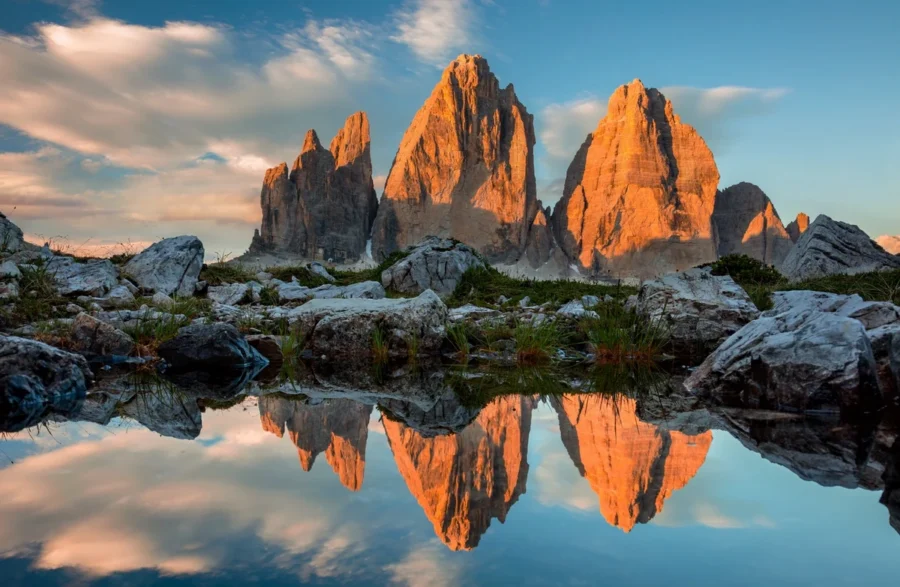
Step onto a trail in the Picos de Europa, and you’ll immediately notice the steep, jagged limestone towers. Peaks like Naranjo de Bulnes shoot up almost vertically, and cliffs seem to drop off out of nowhere. It’s wild, unpredictable, and nothing like the Alps.
Meanwhile, the Sexten Dolomites are all about those sharp, pale spires. The Tre Cime di Lavaredo—probably the most photographed trio around—stand like giant stone teeth. Landmarks like Croda Rossa show off their red rock faces, which really pop against the pale limestone.
I’ll never forget standing below the Tre Cime, thinking the lines looked so clean—like some giant took a chisel to the landscape. In the Picos, the rock’s rougher and more chaotic, but honestly, that’s the charm. You’re in a place that hasn’t been tamed.
Valleys and Villages
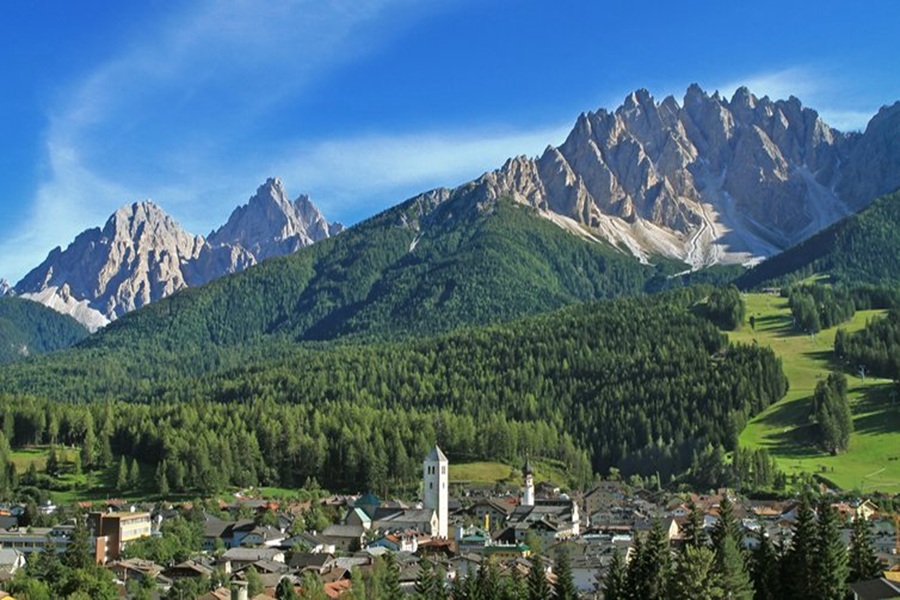
The valleys in the Picos de Europa are remote and quiet. You’ll stumble on stone villages like Bulnes, which you can only reach by foot or funicular. Cows graze in meadows surrounded by cliffs, and you’ll hear their bells echoing through the valley. Life here moves slowly, and you won’t bump into many tourists, even in the most dramatic spots.
Sexten Dolomites’ valleys are broader, and you can drive right into most of them. Villages like Sesto and San Candido have those classic alpine chalets, plus plenty of hotels and Tyrolean restaurants. Gondolas and ski lifts run all summer, so getting to high-altitude trails is a breeze.
If you love infrastructure—cafés at trailheads, clear signage, comfy rifugios—the Dolomites make things easy. But if you want to step back in time and really get away, the Picos valleys are where you’ll find that.
Unique Geological Features
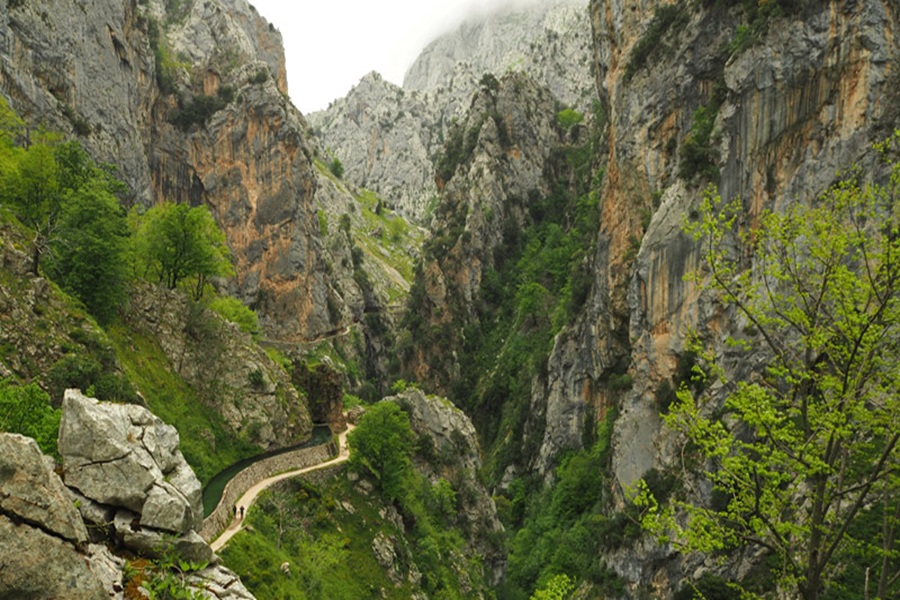
Geology really sets these two apart. The Picos de Europa are all about rugged limestone, sculpted by centuries of wind and water. Deep gorges like the Cares Gorge slice through the range, creating dramatic hiking routes with cliffs towering above you.
The Sexten Dolomites, part of the UNESCO World Heritage Dolomites, get their pale color from dolomite rock. You’ll find ancient volcanic leftovers, like Mount Quaternà, one of the Alps’ oldest volcanic formations. Trails wind past World War I relics, since the front lines once ran right through here.
The Dolomites always strike me as theatrical—bright green meadows beneath pale cliffs, wildflowers everywhere. The Picos, on the other hand, feel moodier and raw, especially when the clouds hang low. Both are stunning, just in totally different ways.
Adventure Activities: Climbing, Trekking, and Via Ferrata
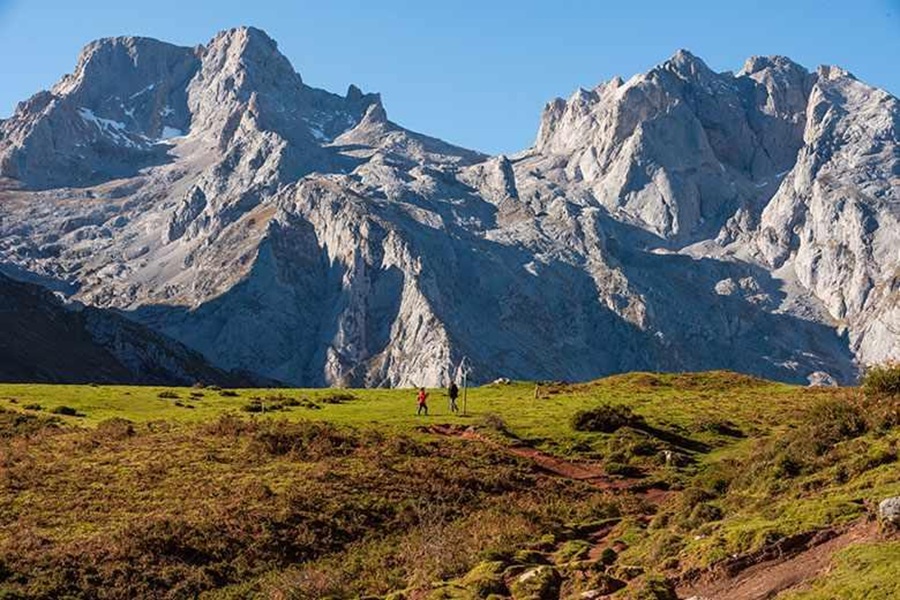
Both the Picos de Europa and Dolomites Sexten invite you to climb, trek, and tackle via ferrata routes. Each region has its own flavor, shaped by the land and the local love for mountain sports.
Climbing Opportunities
If you’re into trad climbing, the Picos de Europa are wild and uncrowded. The limestone walls are sharp and challenging, rewarding you with solitude if you’re up for the adventure. Most climbs are multi-pitch, so you’ll want to be confident on the ropes.
The Dolomites Sexten, though, are famous for dramatic spires and a ton of bolted sport routes. It’s easier to just grab your gear and hop on a climb. Sexten’s also more of an international hub, so you’ll meet climbers from all over Europe.
If solitude’s your thing, Picos is the spot. If you want more variety and easy logistics, Sexten’s got you covered. And hey, you can always book a guided climbing tour if you’d rather not go solo.
Trekking Trails
Trekking in the Picos de Europa feels wild and raw. Trails wind through deep gorges, high meadows, and timeless villages. The Cares Gorge trail is the big draw, but even then, once you’re out there, it never feels packed.
In the Dolomites Sexten, trekking is more organized. There are hut-to-hut routes like the Alta Via, where you can walk for days with just a daypack. Rifugios serve hot meals and a bed, which makes things a lot more comfortable.
I’ve done both, and honestly, it depends on your mood. Rugged and remote? Go Picos. Long-distance trekking with reliable stops? Sexten’s easier. You can plan multi-day hiking trips with local guides in either place if you want to keep things simple.
Via Ferrata Routes
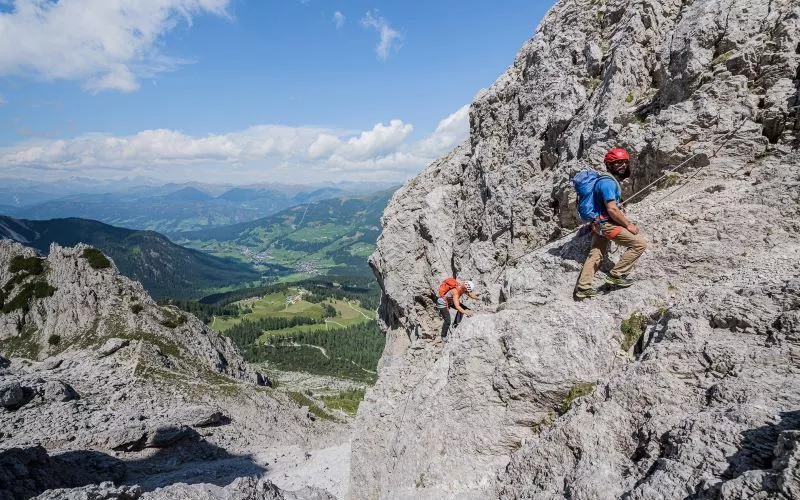
The via ferrata scene really shows the difference between these two. In the Picos de Europa, there aren’t many routes, but the ones you’ll find are wild and adventurous. Steel cables and ladders hug the limestone walls, often in dramatic gorges. It’s a mix of hiking and climbing, but with a wilder edge.
The Dolomites Sexten? This is where via ferrata was born. There are tons of routes, from easy to seriously exposed. The history’s wild too—many of these paths were built during World War I, so you’re literally climbing through old battlefields.
If you’re new to via ferrata, Sexten’s the easiest place to start—routes are well-marked, and you can rent gear everywhere. Want something more off-the-radar? The Picos might surprise you. Either way, you’ll need a harness, helmet, and lanyard, so don’t skimp on safety.
Gateway Towns and Local Culture
Traveling through mountain regions is never just about the peaks. The towns at the base shape your whole trip—whether it’s the food, the people, or the little slice of culture you experience after a long day on the trail. These places add rhythm and history you just can’t get on the summit.
Potes: The Heart of Picos de Europa
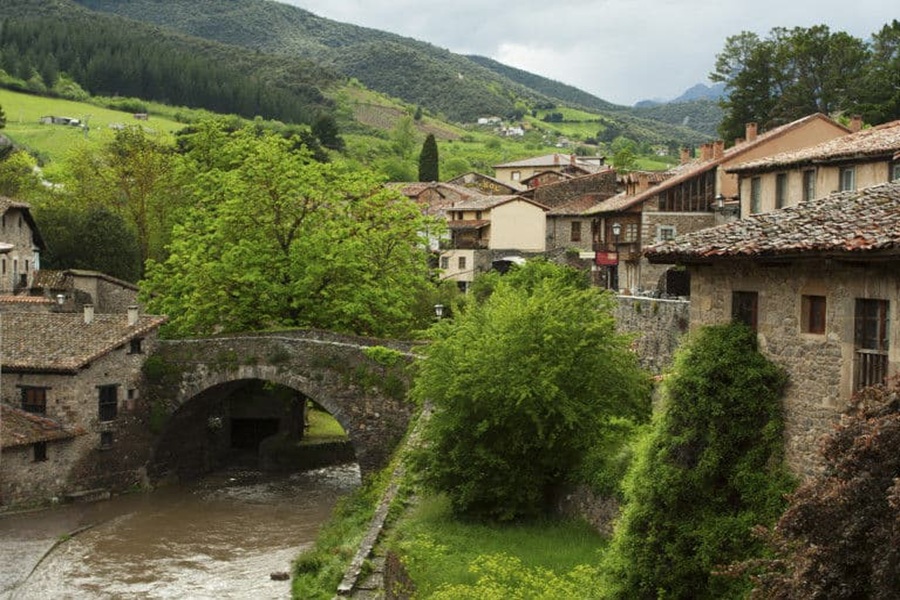
If you’re heading into the Picos de Europa, you’ll probably pass through Potes. This little town, with its cobbled streets and stone bridges, feels like it’s barely changed in decades. It’s the perfect spot to slow down, sip a glass of local orujo (that fiery grape spirit), and watch the world drift by.
Potes sits where several valleys converge, so it’s a natural gathering place. Family-run guesthouses, cozy tapas bars, and tiny shops selling mountain cheese are everywhere. I once ducked into a shop on a rainy afternoon and ended up in a long chat about hiking trails with the owner. That’s just how Potes is—friendly, laid-back, and never in a hurry.
Mondays bring the weekly market, and the town buzzes with stalls selling meats, cheeses, and cured hams. If you need to stock up before a trek, this is the place. The mix of locals and travelers gives it energy without ever feeling like a tourist trap.
Bilbao: Urban Gateway to Adventure
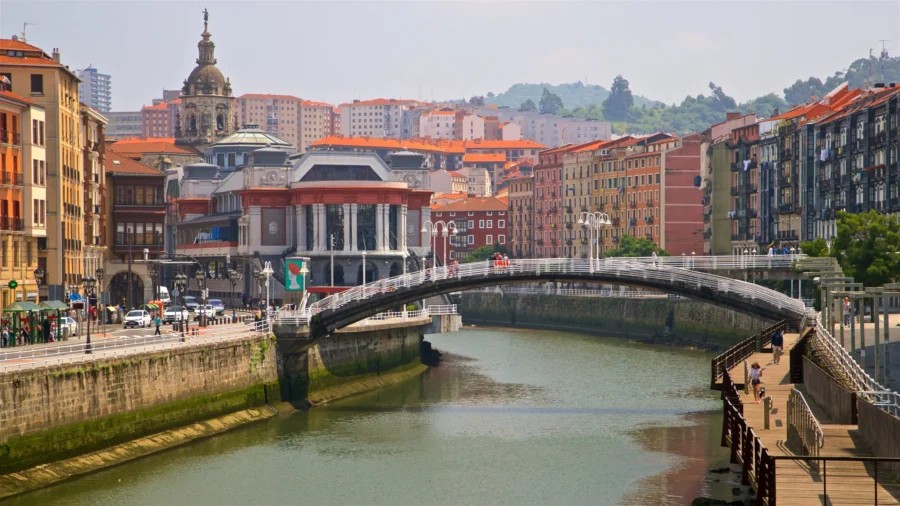
Bilbao isn’t in the mountains, but it’s often where your Picos journey starts. This city has totally reinvented itself, trading its industrial roots for a reputation in art, food, and design. The Guggenheim Museum is the obvious highlight, but honestly, the neighborhoods are where the magic happens.
Wander through the Casco Viejo (Old Town) and you’ll find narrow alleys packed with pintxo bars. Pintxos are like tapas, only smaller and way more inventive. I’ve sat there for hours, sampling everything from classic tortilla to skewers with anchovy, olive, and pepper. The food scene makes you want to linger a bit longer before heading to the mountains.
Bilbao also links you easily to the coast, so you can mix hiking with a few days by the sea. Trains and buses run straight from the airport to mountain towns, so even if you only spend a night here, you’ll get a taste of urban culture to go with your wild adventure.
Sexten Villages: Alpine Charm
On the Dolomites side, the villages around Sexten (or Sesto in Italian) look like they’ve been plucked straight from an Alpine dream—wooden chalets, bursts of flowers in every window, and those jagged peaks looming in the background. Compared to the Picos towns, Sexten’s got this unmistakable Austrian vibe that pops up in everything from the architecture to what’s on your plate.
Menus tempt you with canederli (those hearty bread dumplings), creamy polenta, and apple strudel. It’s a fun mash-up of Italian and Tyrolean flavors. Festivals here? Oh, they’re lively. The Krampus parades in December are wild, and summer folk events really crank up the local energy. If you’re curious about these traditions, you can dig deeper here.
Honestly, Sexten feels slower than big-name spots like Cortina. Nights are quiet, maybe just you and a glass of wine in a cozy inn, and mornings start with cowbells echoing through misty valleys. If you want a gentle intro to the Dolomites, Sexten’s got that sweet spot between comfort and untamed nature.
Best Times to Visit and Weather Considerations
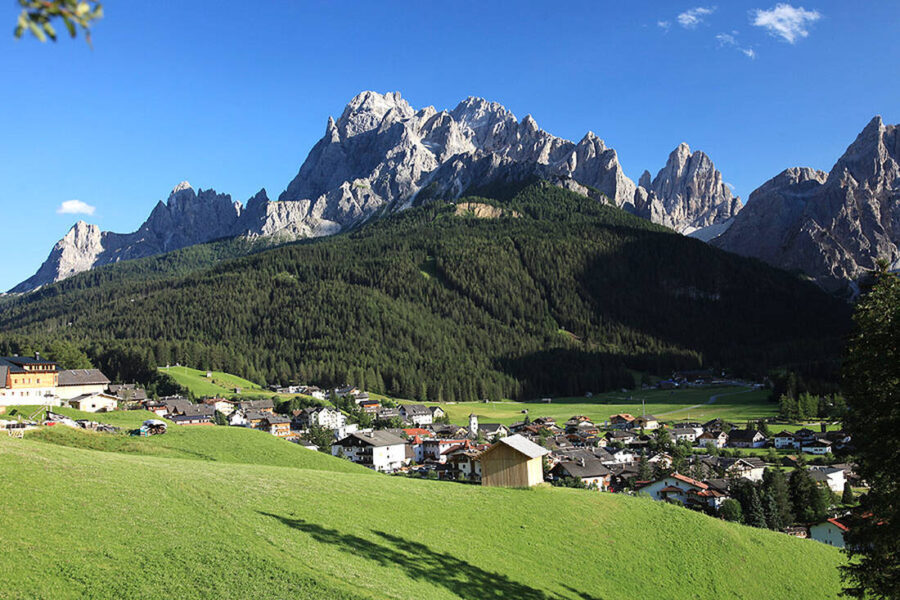
Picos de Europa and the Dolomites Sexten don’t march to the same seasonal beat. Your trip experience will swing wildly depending on when you go, the weather, and just how many people decide to show up. Picking your moment really matters—nobody wants to feel rushed or crowded out when the mountains are calling.
Seasonal Highlights
If hiking’s your thing, the Dolomites are at their best from July through September. Trails are all open, daylight stretches on, but yeah, you’ll be sharing the views with plenty of others. Late September, though, is magic—golden larches, crisp air, and way fewer boots on the ground. Here’s a good spot for more seasonal Dolomites highlights.
The Picos de Europa don’t get as long a summer. June to early October is usually your best bet for trekking. Wildflowers explode in June, and September brings that sharp, clear mountain air. Winter’s a different beast—mud, snow, and only for the truly adventurous.
If you’re into skiing, Dolomites easily take the crown. Resorts around Sexten run from December through March, and the slopes are world-class. Picos? Not so much for skiing. Winter there is quieter, more about sleepy villages and those dramatic, snow-dusted valleys (quiet villages in winter).
Weather Patterns
The Dolomites, up in northern Italy, usually serve up warm but not sweaty summers—think 15°C to 25°C. Afternoon storms can sneak up fast, so I always hit the trails early. Winters? Cold, sometimes biting, but perfect for anyone chasing snow. Spring has its wet spells, especially May and June.
Picos de Europa, on the other hand, get shaped by the Atlantic. More rain, more clouds, cooler temps. Even in July, I’ve dodged surprise showers and watched fog swallow whole valleys in minutes. Winters bring snow up high, but mostly rain down in the towns.
If you’re a sunshine chaser, Dolomites are the safer bet. But if you don’t mind a little drizzle and love those lush green valleys, Picos will totally charm you—and hey, fewer sunburns.
Crowd Levels and Accessibility
August in the Dolomites? It’s a madhouse. Tre Cime di Lavaredo gets packed, parking lots fill up before lunch, and if you want a mountain hut bed, you better book way ahead. I’ll always recommend late spring or early fall for some peace. Lifts and huts still run, but the crowds thin out.
The Picos de Europa never really reach that level of chaos. Sure, July and August draw more hikers and Spanish families, but you’ll still find stretches of trail where it’s just you and the mountains. Only real snag is weather—cable cars and mountain roads sometimes shut down when storms roll in.
Dolomites have nailed the infrastructure game. Well-marked trails, plenty of huts, ski lifts, and even tourist buses. Picos keep things more rustic. Fewer services, remoter villages. If you’re after solitude, that’s a plus, but it does mean you’ll have to plan a bit more.
Travel Tips and Essential Information
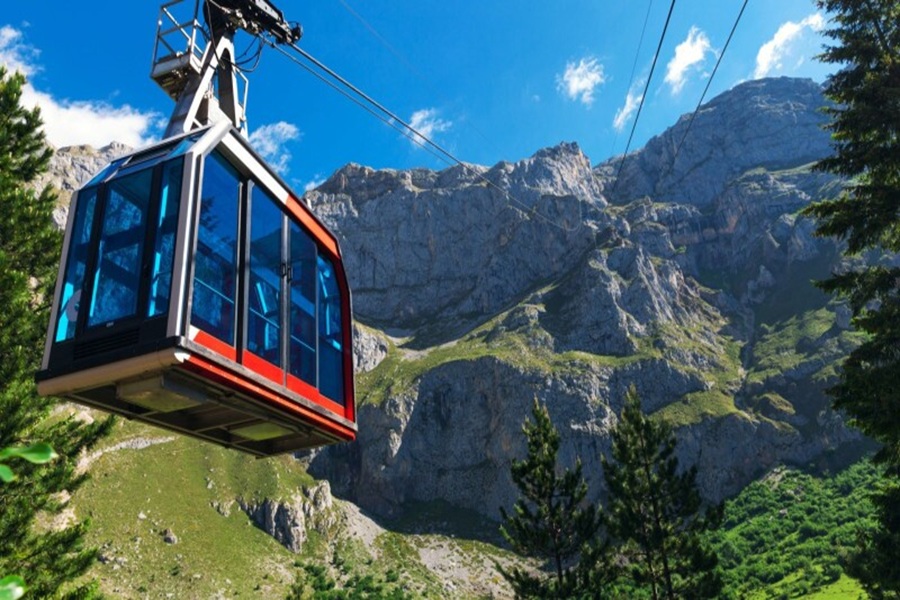
Traveling in the Picos de Europa and the Dolomites takes some planning. Getting around, finding a bed, and staying safe—these details matter, especially when the landscape gets wild. Both regions can feel remote, so a bit of prep goes a long way.
Getting There and Around
For the Picos de Europa, fly into Santander or Asturias. Bilbao’s another option, but it’s about three hours away. Honestly, renting a car is easiest—public buses exist, but they’re pretty limited, especially outside the summer crush.
Dolomites have better train and bus links, but, let’s be real, having your own wheels gives you the most freedom. You can fly into Venice, Innsbruck, or Verona, then finish the journey by rail or car. I’ve tried both, and driving just makes life easier, especially with hiking gear.
I usually check KAYAK for flights and rentals—it’s just convenient to see all the options, especially if you’re mixing airports.
Accommodation Options
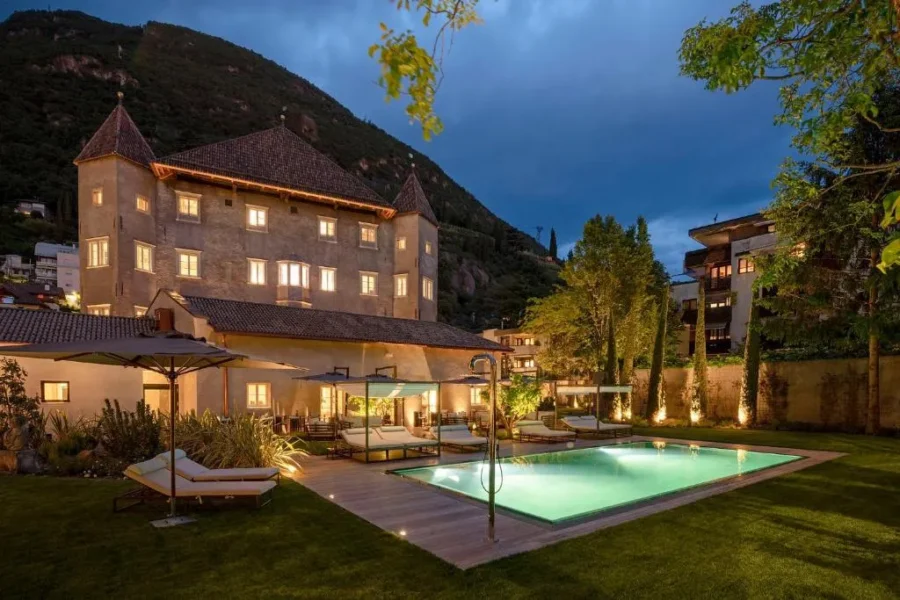
Both regions offer everything from simple guesthouses to mountain huts. In the Picos, family-run inns in villages like Potes or Arenas de Cabrales feel super homey. The Dolomites are famous for their rifugi—alpine huts serving hot meals and bunks for tired hikers.
If you want something cushier, towns like Bolzano or Cangas de Onís have hotels with easy access to restaurants. I like to mix it up—one night roughing it in a hut, then a comfy bed to recover.
Booking.com is my go-to for hunting down options, but in peak hiking season, you need to book early. Rifugi especially—those beds disappear fast, especially on popular routes like Alta Via 1.
Safety and Regulations
Trails are well-marked in both parks, but conditions flip fast. Picos can throw fog and rain at you with zero warning. Dolomites summers are steadier, but those afternoon storms are no joke. Always check the forecast before heading out.
Bring layers, a map, and enough water. I’ve underestimated “easy” trails and regretted it. Trekking poles have saved my knees more times than I care to admit. Here’s a list of reliable travel gear that won’t slow you down.
The rules are pretty simple: stick to marked paths, don’t mess with the wildlife, and camp only where it’s allowed. In the Dolomites, some via ferrata routes require a helmet and harness. In the Picos, sturdy boots are a must. And please, get travel insurance that covers mountain adventures—it’s just smart, especially if you’re going high.
Frequently Asked Questions
Picos de Europa and the Dolomites Sexten both deliver rugged beauty, epic trails, and a good dose of culture. The big differences? When to visit, how tough the hiking feels, and the wildlife and traditions you’ll stumble across.
What are the best seasons to visit the Picos de Europa and the Dolomites Sexten for hiking?
For the Picos de Europa, late spring to early autumn is ideal. June and September are my favorites—mild weather, fewer crowds.
The Dolomites Sexten really come alive in July and August when the meadows pop with color, but there are more people. September gives you a quieter, more relaxed vibe.
Can you recommend some must-see sights in both the Picos de Europa and the Dolomites Sexten?
In the Picos de Europa, you can’t skip the Covadonga Lakes and the Cares Gorge trail—those views just don’t quit. Drop into a mountain village and watch someone pour cider the old-school way.
Over in the Dolomites Sexten, the Tre Cime di Lavaredo loop is the classic. For something quieter, try Monte Casella—huge views, hardly any crowds (Sexten hiking tips).
What are the differences in the difficulty levels of trails between the Picos de Europa and the Dolomites Sexten?
Trails in the Picos feel wilder and sometimes poorly marked, so even moderate hikes can turn into a real adventure. Expect steep climbs and rocky bits—good shoes are non-negotiable.
Dolomites Sexten offers everything from easy walks to brutal climbs. Some trails are family-friendly, but others call for serious fitness and, occasionally, ropes (Dolomites routes overview).
Are there guided tours available in both Picos de Europa and the Dolomites Sexten, and how do they compare?
You’ll find guided tours in both regions. In the Picos, guides often mix hiking with stories, food, and even cheese tastings—it feels personal, almost like hiking with friends.
Dolomites Sexten guides lean into alpine sports and mountaineering. Think multi-day hut treks led by pros, sometimes with a technical twist.
What unique flora and fauna might one encounter while trekking in the Picos de Europa compared to the Dolomites Sexten?
In the Picos de Europa, you might spot chamois, griffon vultures, or, if you’re lucky, a Cantabrian brown bear. Wildflowers and tough alpine plants thrive in the limestone.
In the Dolomites Sexten, marmots are everywhere, and golden eagles soar overhead. Summer brings edelweiss and gentian, splashing color across the meadows.
Could you provide insight into the cultural experiences available to visitors of the Picos de Europa and the Dolomites Sexten?
In the Picos de Europa, culture just seeps out of the landscape. Shepherding traditions are everywhere—honestly, you can’t miss them—and there are Asturian cider houses that locals love.
If you’re lucky, you might wander into a tiny mountain village and find a festival in full swing. The cheese caves here? They’re older than some countries, and stepping inside feels like a trip back in time.
The Dolomites Sexten hit differently, blending Austrian and Italian vibes. You’ll hear German as much as Italian, which can be a little surprising at first.
Mountain huts dish out dumplings and strudel next to fresh pasta—sometimes all at the same table. This mashup of languages and traditions gives the region a personality all its own.
